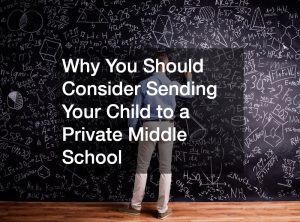Before school boards and standardized exams existed, education was a very flexible field that only a few could participate in. Centuries ago, only a privileged few had the right to learn reading, writing, and basic subjects, while the rest were forced into submission as servants to their lords and masters.
However, once religious and secular organizations saw how education could instill beliefs at a young age, compulsory education grew in Europe and eventually spread to the rest of the world. Around this time, child labor was banned, and nearly everyone’s childhood became a time for learning. Schools were established.
While there were many supporters for education from all sects, they were there mainly to influence or control the way teachers conditioned children to believe. Eventually, education evolved into what it is today, providing students with factual and standardized lessons.
Teaching methods have been developing since the beginning. The last few years have seen changes to these approaches, some of which are effective enough to improve the way students retain information and apply it outside of school.
Technology in Education
 Thanks to technology’s advancements, educators have the opportunity to use tech to teach students more efficiently. Instead of using the traditional flashcards, posters, and chalkboards, teachers now use PowerPoint, apps, and other digital mediums to communicate with students. In the past, teachers would need to lug huge equipment into the classroom to play videos. Today, many classrooms are equipped with computers and projectors that can display videos conveniently.
Thanks to technology’s advancements, educators have the opportunity to use tech to teach students more efficiently. Instead of using the traditional flashcards, posters, and chalkboards, teachers now use PowerPoint, apps, and other digital mediums to communicate with students. In the past, teachers would need to lug huge equipment into the classroom to play videos. Today, many classrooms are equipped with computers and projectors that can display videos conveniently.
While flashcards will always be an iconic part of the classroom, teachers should take advantage of the technology that makes their job easier for them and the students. Instead of the class sharing one book, teachers can share the files in a Dropbox or Google Drive accessible to all. Instead of asking students to buy physical textbooks, students can opt to purchase e-textbooks instead, which are less expensive, environment-friendly, portable, and interactive.
Parent Engagement
With technology, communication between parents and educators has become convenient and more direct. Teachers can now reach out to parents and involve them in their students’ learning process. They can remind parents about their children’s progress without having to schedule face-to-face appointments.
This ease of communication has shown its effectiveness in one study. In 2017, Columbia University looked at 22 middle and high schools in West Virginia and gathered a sample of 1,137 fifth grade students. For two school years, parents received weekly text updates on missed assignments, absences, and poor grade averages. After the experiment, there was an 18 percent increase in attendance and a 39 percent decrease in class failures.
Positive Reinforcement
 More teachers are actively practicing a positive reinforcement stance over a negative one. Instead of scolding or giving punishment for bad behavior, students receive positive reinforcement, such as recognition or rewards for actions that the teacher wants them to repeat. This hones the student’s behavior, as it encourages him or her to keep repeating the action and practice associated with a reward.
More teachers are actively practicing a positive reinforcement stance over a negative one. Instead of scolding or giving punishment for bad behavior, students receive positive reinforcement, such as recognition or rewards for actions that the teacher wants them to repeat. This hones the student’s behavior, as it encourages him or her to keep repeating the action and practice associated with a reward.
Some may argue that this will eventually become ineffective once students are satiated with their need for the reward. Teachers need to find the right balance to shape their students’ behavior positively.
Teachers are beginning to recognize that their students are not equal in circumstances or backgrounds. Children who have experienced trauma such as the loss of a loved one, their parents’ divorce, or abuse may not focus in class or perform as well as children who have not experienced these. Studies show that 25 percent of children in the United States will experience a traumatic event by the age of 16.
Trauma is not something a student can leave at the door when they enter the classroom. Teachers need to be conscious of their classroom strategies and the environment they are setting to help children build up their resilience.
Apart from trauma, teachers must also consider their background. Factors such as gender, race, religious beliefs, and other intersectional issues affect the way a student learns or performs compared to more privileged students whose backgrounds allow them no issues while learning.
Take for example the way parents play a role in their children’s education. A Stanford University paper in 2014 found that African-American and Latino adults were more likely to respond to text messaging than Caucasian parents because it is a more convenient form of communication over other means such as calls and emails. This is because many low-income parents working second shifts have less time to respond to emails and are not always available to talk when the teacher calls. According to Deb Socia, a director of the Tech Goes Home initiative to improve technology for low-income parents, teachers should understand that parents are not always available to help their children, especially low-income parents who are busy. Simply by communicating through text, teachers can help more students succeed with their parents’ help.
Project-Based Learning
Some teachers believe that traditional methods of teaching are not equipping students with the right mindset after they leave the school. Students can memorize information, but applying information to real-life concepts as well as skills, such as problem solving and perseverance, cannot be taught inside a classroom. This fact is becoming evident in the workforce: out of 700 business owners surveyed in 2013, over half of them saw job applicants with a glowing academic record but lacked the skills to be a desirable employee.
To address this deficiency, teachers are turning to project-based learning, a method where students dynamically approach a topic through real-life situations. Teachers do not spoon-feed the answers to students but provide them with the resources to learn and apply it in everyday situations. Under sciences, for example, teachers will not ask the student to list down the types of heat, but why one source of heat is much more effective for a specific purpose over another source.
During a three-year study under the Stanford Center for Assessment, Learning, and Equity in 2013, classrooms with project-based learning methods had higher rates of participation and engagement. Students were also motivated to learn more.
These trends have provided students with quality educational experience that helps them learn academically and integrates factors outside of the classroom into their lessons. While teachers do not have to practice all of these new methods in their class, they can find one that best suits their subject, teaching style, and classroom setting.
















